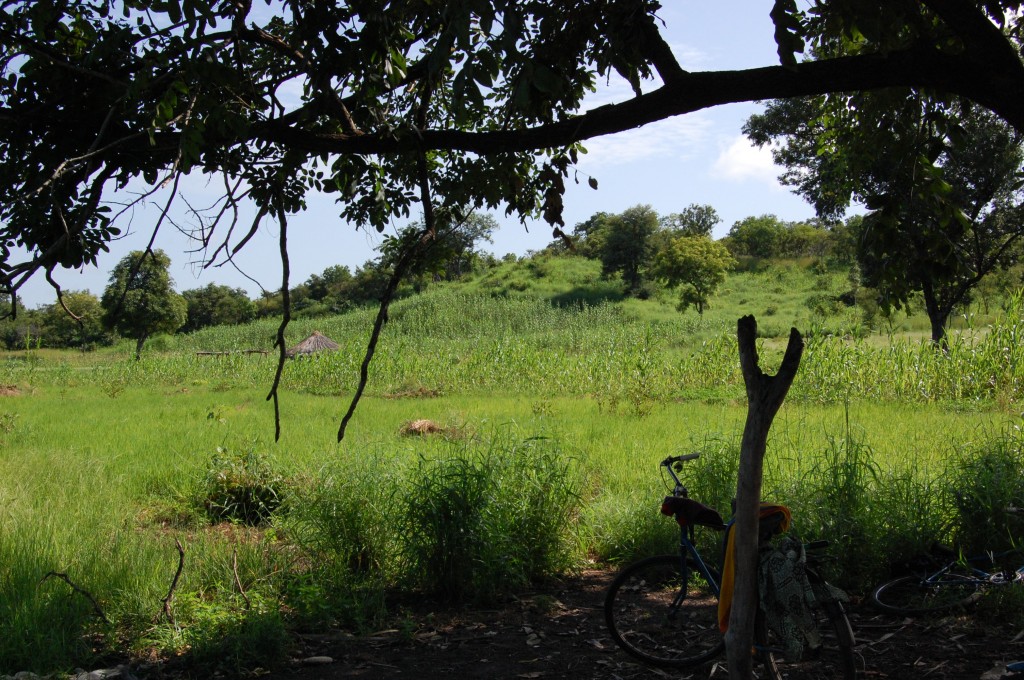
In 1997, New York City decided to allocate $1.5 billion to preserve and restore the Catskill/Delaware Watershed, an ecosystem over 100 miles outside of the city limits. The venture was more than an act of ecological good will; it was a savvy investment in the well being of New York City’s 8 million residents.
Unlike many cities, the five boroughs—and several upstate counties—rely on natural processes to purify their water supply. The Catskill/Delaware Watershed is the heart of the city’s purification system. In the winter, snow collects on the Catskill mountaintops and, in the spring, the melted snow runs through streams and down forested mountainsides until it reaches a network of reservoirs from which it flows to faucets in TriBeCa, SoHo, Dumbo, and BedStuy. On its way to the reservoir the water runs through soil where contaminants are drawn out and broken down by roots, ionized soil particles, and microbes. Remaining excess nutrients—such as nitrogen—are taken up and used for growth and photosynthesis by plants in streams, rivers, forests, and fields along the way.
Since New York began to draw water from the Catskill/Delaware Watershed these natural processes efficiently and unfalteringly allowed New Yorkers a safe and reliable source of water. Beginning in the 1980s, however, agricultural expansion and land cover change created an increasingly fragmented habitat with less biomass and more cultivated land. More fertilizer was applied across the landscape, which meant that excess nutrients were picked up by—and not filtered out of—water as it flowed towards the reservoirs. The trees that were cleared to make way for pasture and farmland were no longer able to purify the water with their roots.
The problem was clear: natural processes were no longer sufficient to provide New Yorkers with the clean water on which they relied. The city faced a decision between building a water treatment plant for $3 billion, excluding operating costs, and investing $1.5 billion into restoring and maintaining natural processes. The decision to invest in maintaining the ecosystem functions for the benefit of humans is a classic example of management for what has come to be known as ‘ecosystem services.’
What are ‘ecosystem services’?
Ecosystem services, put simply, are the benefits that people get from ecosystems. These benefits could be globally regulated—such as a habitable climate—or locally regulated—such as food production. Some benefits are felt equally by all humans—such as a proper amount of oxygen in our atmosphere—and some are only experienced by a certain percentage—for instance, the availability of clean water in New York says nothing about the availability of potable water in Conakry.
Services are regulated and experienced at different spatial scales; but there are also different categories of services. The Millennium Ecosystem Assessment of 2005 developed what has come to be the standard classification of services. Ecosystem services can be broken into: provisioning services, regulating services, supporting services, and cultural services.
Perhaps the most intuitive service is the provisioning service, which consists of the benefits that people directly collect from ecosystems. This includes food, water, timber, and non-timber forest products. Directly related to the provisioning service are supporting services, which are the basic ecosystem processes that directly affect the amount of provisioning services available. These include soil formation, decomposition, nutrient cycling, and photosynthesis.
Also affected by supporting services are the regulating services. These are the services that regulate key properties of an ecosystem that allow humans to thrive. Key examples are climate regulation, water quality regulation (though the availability of water is a provisioning service), and regulation of extreme weather events, such as floods and major storms. The final group is that of cultural services, which is composed of the recreational and aesthetic uses as well as cultural and spiritual value associated with ecosystems.
Understanding the benefits that people get from ecosystems is essential for making management and policy decisions that could affect the environment and, therefore, the availability of these services. Simply classifying services at a given point in time is insufficient for informing policy. What managers need to understand is how their decisions, by affecting the environment, will affect the amount of ecosystem services available to people. Answers to this question require investigation by ecologists into the mechanisms driving the relationship between environmental change and the availability of ecosystem services.

Ecology and ecosystem services
To define ecosystem services in a related but slightly different way: ecosystem services are the functions and properties of ecosystems that are valuable to people. This definition casts services as part of an ecosystem rather than as part of the set of things that people draw benefit from. They are essentially ecosystem functions and properties, but they happen to be the ones that we value.
For decades ecologists have sought to answer the question of what regulates and drives basic ecosystem functions and services. The relevant variables are a complex arrangement of biotic and abiotic factors and their interactions. Ecologists have honed in on several key ecosystem properties and functions, such as nutrient cycling, above ground biomass, and net primary productivity, in the search for generalizable answers to this question.
One of the most exciting and controversial areas of inquiry in the last twenty years has been on the role that biological diversity, also known as biodiversity, plays in determining the functioning of ecosystems. The eminent biologist E.O. Wilson coined the term biodiversity and it has come to refer to the variety of life—whether taxonomic, genetic, phylogenetic, or functional—in a given system. Starting in the early-1990s, ecologists began to use experiments to explore whether increased biodiversity was associated with increased functioning. Most of this research has focused on simplified plants communities—or in model microcosms—and found that there is a relationship between increased biodiversity and the productivity of the system, though that relationship levels off at higher amounts of biodiversity. What remains controversial is why systems are more productive with greater amounts of diversity. Is it because including more species increases the likelihood that a species will be present that has a disproportionately large effect on ecosystems? Or might it be due to the increased efficiency of use of different types of resources by different types of species—it’s only with deeply rooting trees that nutrients can be drawn from lower in the soil profile? Or maybe more species modify the environment in such a way that allows for an even greater number of species? To the extent that there exists an answer to this question, it remains elusive to ecologists, and is an active area of research in nearly every type of ecosystem.
If ecosystem functions are determined, in some way, by the biodiversity of the ecosystem, then ecosystem services, which are the subset of functions that are useful to people, ought also to be affected by the diversity of species and functional traits in a system. Perhaps due to ease, ecologists have primarily focused on ecosystem functions that are simple to quantify, such as above-ground biomass of grassland communities. But answering the question of how biodiversity relates to ecosystem services is essential for making informed policy and management decisions. How much biodiversity loss can an ecosystem take before it starts to lose the ability to provide essential ecosystem services? To put the issue as a thought experiment: what species would we take with us if we needed to start over on another planet? Which species are essential for providing the services that we depend on?
Management of ecosystem services
The thought experiment of which species to take with us to the moon is unrealistic, but gets at the central issue surrounding the management of ecosystem services: how much biodiversity do we need to conserve in order to maintain the ecosystem services that are essential to our well being?
Certainly we humans benefit enormously—and perhaps immeasurably—from pollination, water filtration, soil quality, climate regulation, and other key services. But we also benefit from roads, electricity, and man-made development. And human history shows us that there is a trade off between the amount of human development and the health of environment. This translates into a trade off between ecosystem services and man-made goods and services. Though fields such as green chemistry and industrial ecology are helping us to minimize the impact of the built environment on the natural environment, policy makers and managers are still forced to determine the optimal balance between the two.
Effective management and policy making for ecosystem services will require an adaptive approach in which knowledge created by researchers is generated in participation with users and then implemented in such a way that will produce more information to further improve implementation. This cyclical process is known as ‘adaptive management’ and is a key part of a knowledge system. Management for ecosystem services—and for sustainable human well being—will have to be intertwined with ecological research. An example of such a linkage is the Millennium Villages Project run by the Earth Institute. Though primarily a development project aimed at achieving the Millennium Development goals, researchers from multiple disciplines—economics, ecology, health sciences, geography, et cetera—are conducting inter- and intra-disciplinary research to figure out how to make progress towards achieving their mission of helping communities sustainably moving out of poverty.
For communities that depend directly on their natural resource base, such as those in the Millennium Village Project sites, ecosystem services play an essential role in human well-being. Sustainably managing these ecosystem services will require foundational ecological research to be conducted in cooperation with efforts to manage these services. We have reached a point where neither can work alone.